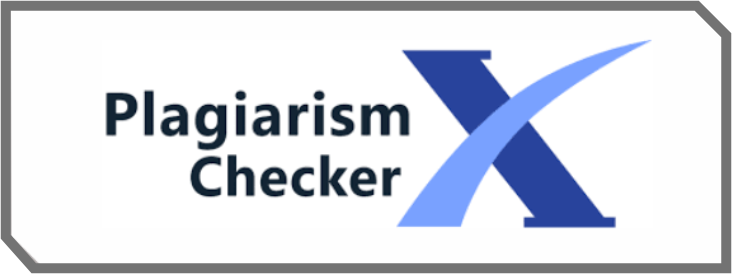Tinjauan Literatur: Peran Teripang (Holothuria scabra) Sebagai Anti-Inflamasi
DOI:
https://doi.org/10.59841/jumkes.v3i2.2594Keywords:
Sea Cucumber, Holothuria scabra, Anti-inflammatoryAbstract
Chronic inflammation is a major contributing factor to the development of degenerative diseases such as diabetes, cancer, and cardiovascular disorders. This literature review aims to examine the anti-inflammatory potential of sea cucumber (Holothuria scabra) based on five recent experimental studies. The findings indicate that H. scabra effectively suppresses the production of pro-inflammatory mediators such as NO, iNOS, PGE₂, IL-1β, TNF-α, and IL-6, and inhibits key signaling pathways including NF-κB and JNK. Moreover, active compounds such as scabraside and holothurinoside G demonstrate the ability to inhibit KEAP1, thereby activating the Nrf2 pathway involved in cellular protection against oxidative stress. Evidence from in vivo study also shows H. scabra’s capability to reduce tissue lesions caused by inflammation. Therefore, H. scabra holds great promise as a natural anti-inflammatory agent for the prevention and treatment of chronic inflammatory conditions.
References
Andriawan, S., Hermawan, D., Maidah, E. N., Cahyani, D., & Sanoesi, E. (2021). Anti-inflammatory effects of Holothuria scabra extract on Pangasianodon hypophthalmus tissues infected with Aeromonas hydrophila. Aquaculture, Aquarium, Conservation & Legislation, 14(3), 1259–1270.
Arulselvan, P., Fard, M. T., Tan, W. S., Gothai, S., Fakurazi, S., Norhaizan, M. E., & Kumar, S. S. (2016). Role of antioxidants and natural products in inflammation. Oxidative Medicine and Cellular Longevity, 2016(1), Article 5276130. https://doi.org/10.1155/2016/5276130
Chen, L., Deng, H., Cui, H., Fang, J., Zuo, Z., Deng, J., ... & Zhao, L. (2018). Inflammatory responses and inflammation-associated diseases in organs. Oncotarget, 9(6), 7204. https://doi.org/10.18632/oncotarget.23208
Dewi, L., Indrawati, R., Putra, A. S., Jauhar, T., Wibowo, P., Rahayu, I. N., ... & Nataswari, A. A. I. A. S. (2025). Anti-inflammatory and antioxidant effects of sea cucumber extract in mitigating hepatic TNF-α elevation induced by high-fat diet. Multidisciplinary Science Journal, 7(5), Article 2025242. https://doi.org/10.31893/multiscience.2025242
Ellulu, M. S., Patimah, I., Khaza’ai, H., Rahmat, A., & Abed, Y. (2017). Obesity and inflammation: The linking mechanism and the complications. Archives of Medical Science, 13(4), 851–863. https://doi.org/10.5114/aoms.2016.58928
Ereguero, M. G., Gelani, C., Dalayap, R., Cordero, M. A., & Tabugo, S. R. (2023). Antibacterial and anti-inflammatory potential of three sea cucumber species from Tukuran, Zamboanga del Sur, Mindanao, Philippines. Biodiversitas Journal of Biological Diversity, 24(5). https://doi.org/10.13057/biodiv/d240504
Furman, D., Campisi, J., Verdin, E., Carrera-Bastos, P., Targ, S., Franceschi, C., ... & Slavich, G. M. (2019). Chronic inflammation in the etiology of disease across the life span. Nature Medicine, 25(12), 1822–1832. https://doi.org/10.1038/s41591-019-0675-0
Hamel, J. F., Eeckhaut, I., Conand, C., Sun, J., Caulier, G., & Mercier, A. (2022). Global knowledge on the commercial sea cucumber Holothuria scabra. Advances in Marine Biology, 91, 1–286. https://doi.org/10.1016/bs.amb.2022.04.001
Hu, S., Wang, J., Wang, J., Xue, C., & Wang, Y. (2017). Long-chain bases from sea cucumber mitigate endoplasmic reticulum stress and inflammation in obesity mice. Journal of Food and Drug Analysis, 25(3), 628–636. https://doi.org/10.1016/j.jfda.2016.10.011
Libby, P. (2007). Inflammatory mechanisms: The molecular basis of inflammation and disease. Nutrition Reviews, 65(suppl_3), S140–S146. https://doi.org/10.1111/j.1753-4887.2007.tb00352.x
Monteiro, R., & Azevedo, I. (2010). Chronic inflammation in obesity and the metabolic syndrome. Mediators of Inflammation, 2010, Article 289645. https://doi.org/10.1155/2010/289645
Muñoz Carrillo, J. L., Castro García, F. P., Gutiérrez Coronado, O., Moreno García, M. A., & Contreras Cordero, J. F. (2017). Physiology and pathology of innate immune response against pathogens. https://doi.org/10.5772/intechopen.70556
Pranweerapaiboon, K., Apisawetakan, S., Nobsathian, S., Itharat, A., Sobhon, P., & Chaithirayanon, K. (2020). An ethyl-acetate fraction of Holothuria scabra modulates inflammation in vitro through inhibiting the production of nitric oxide and pro-inflammatory cytokines via NF-κB and JNK pathways. Inflammopharmacology, 28, 1027–1037. https://doi.org/10.1007/s10787-019-00677-3
Takeuchi, O., & Akira, S. (2010). Pattern recognition receptors and inflammation. Cell, 140(6), 805–820. https://doi.org/10.1016/j.cell.2010.01.022
Tas, S. W., Remans, P. H., Reedquist, K. A., & Tak, P. P. (2005). Signal transduction pathways and transcription factors as therapeutic targets in inflammatory disease: Towards innovative antirheumatic therapy. Current Pharmaceutical Design, 11(5), 581–611. https://doi.org/10.2174/1381612053381918
Wargasetia, T. L., Kinghua Liana, L., Larissa, L., & Valencia Imannuel, E. (2024). Holothuria scabra extract improves histopathological features and inhibits cancer growth through IL-6 and NF-κB signaling pathways in breast cancer mice model. Research Journal of Pharmacognosy, 11(2), 1–9. https://doi.org/10.15407/exp-oncology.2024.01.022
Wargasetia, T. L., Ratnawati, H., Widodo, N., & Widyananda, M. H. (2023). Antioxidant and anti-inflammatory activity of sea cucumber (Holothuria scabra) active compounds against KEAP1 and iNOS protein. Bioinformatics and Biology Insights, 17, 11779322221149613. https://doi.org/10.1177/11779322221149613
Downloads
Published
How to Cite
Issue
Section
License
Copyright (c) 2025 Jurnal Mahasiswa Ilmu Kesehatan

This work is licensed under a Creative Commons Attribution-ShareAlike 4.0 International License.










